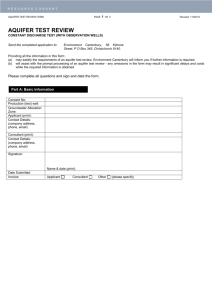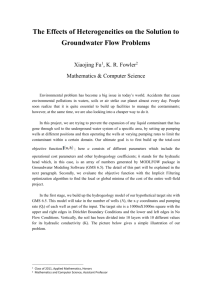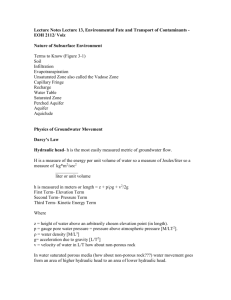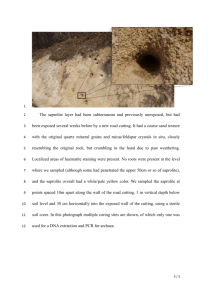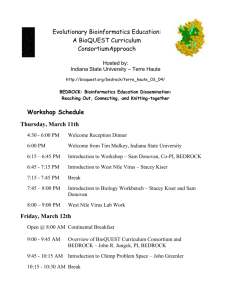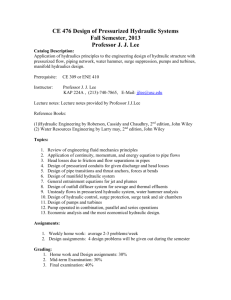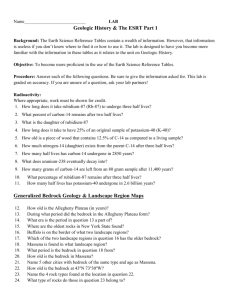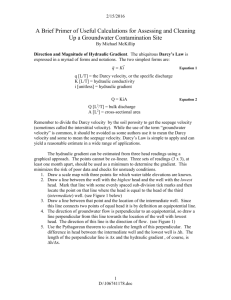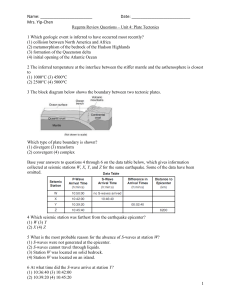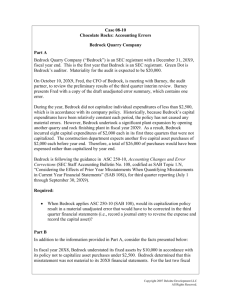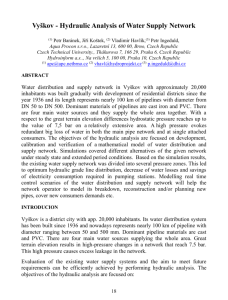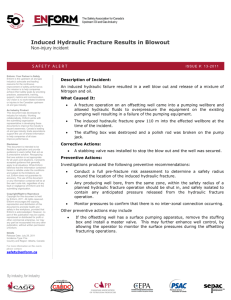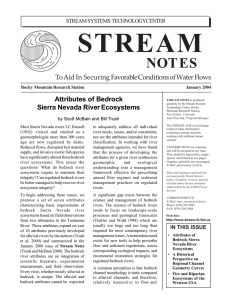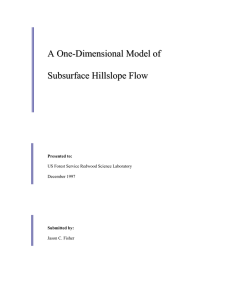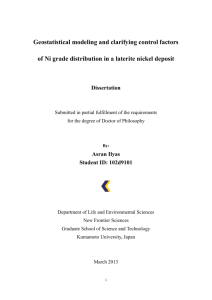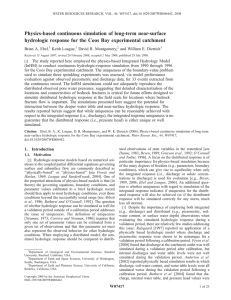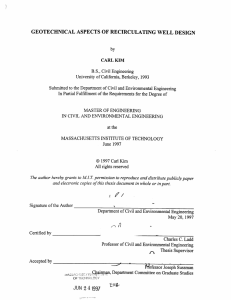Piedmont Hydrology
advertisement
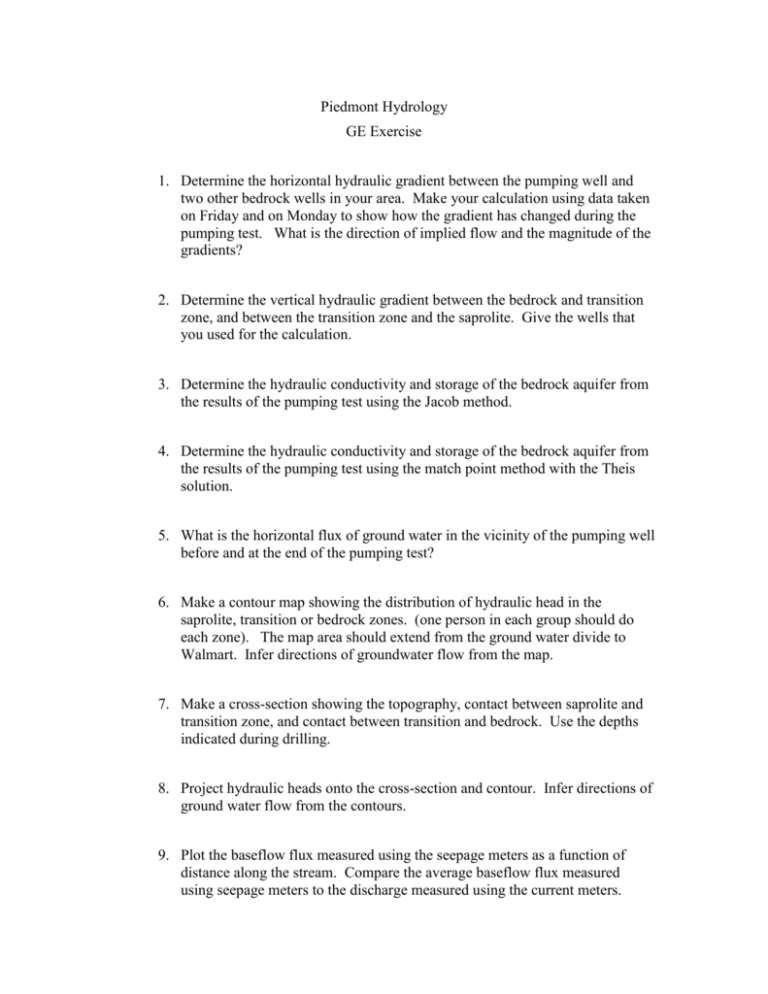
Piedmont Hydrology GE Exercise 1. Determine the horizontal hydraulic gradient between the pumping well and two other bedrock wells in your area. Make your calculation using data taken on Friday and on Monday to show how the gradient has changed during the pumping test. What is the direction of implied flow and the magnitude of the gradients? 2. Determine the vertical hydraulic gradient between the bedrock and transition zone, and between the transition zone and the saprolite. Give the wells that you used for the calculation. 3. Determine the hydraulic conductivity and storage of the bedrock aquifer from the results of the pumping test using the Jacob method. 4. Determine the hydraulic conductivity and storage of the bedrock aquifer from the results of the pumping test using the match point method with the Theis solution. 5. What is the horizontal flux of ground water in the vicinity of the pumping well before and at the end of the pumping test? 6. Make a contour map showing the distribution of hydraulic head in the saprolite, transition or bedrock zones. (one person in each group should do each zone). The map area should extend from the ground water divide to Walmart. Infer directions of groundwater flow from the map. 7. Make a cross-section showing the topography, contact between saprolite and transition zone, and contact between transition and bedrock. Use the depths indicated during drilling. 8. Project hydraulic heads onto the cross-section and contour. Infer directions of ground water flow from the contours. 9. Plot the baseflow flux measured using the seepage meters as a function of distance along the stream. Compare the average baseflow flux measured using seepage meters to the discharge measured using the current meters.

